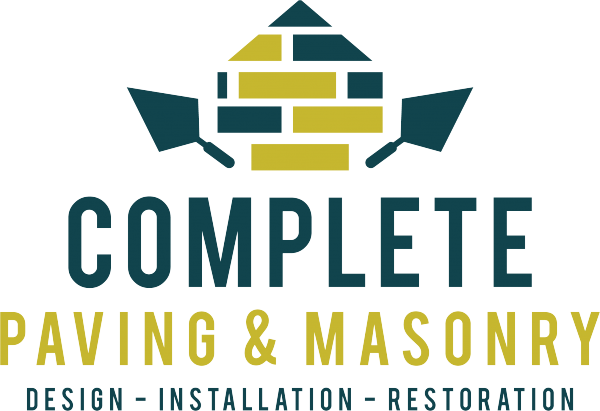DIY Chimney Cleaning Techniques
Regular chimney maintenance is essential to ensure proper airflow and prevent blockages. One common DIY chimney cleaning technique involves using a chimney sweep brush to dislodge built-up debris and creosote. To perform this task, begin by securing the brush to a rod and feeding it through the chimney from the top. With a Chimney Installation Norwood, move the brush up and down in a scrubbing motion to break apart any obstructions in the flue.
Additionally, utilizing a chimney cleaning log can help reduce creosote buildup by breaking it down into a less flammable form. These logs contain special chemicals that promote the breakdown of creosote when burned. Remember to always follow the manufacturer’s instructions when using such products, and consider incorporating them into your regular chimney maintenance routine to keep your chimney clear and safe.
Using a Chimney Sweep Brush
If you notice that your chimney is not drawing smoke properly or if there is a strong odor coming from it, it might be time to consider cleaning it with a chimney sweep brush. Chimney sweeps are designed to remove soot, debris, and creosote buildup from the inner walls of the chimney, ensuring proper ventilation and reducing the risk of chimney fires. It is recommended to use a chimney sweep brush that is appropriate for the size and shape of your chimney, and to follow the manufacturer’s guidelines for safe and effective use. If you are not comfortable cleaning the chimney yourself, consider hiring a professional chimney sweep service such as Chimney Installation Norwood to ensure the job is done correctly and safely.
How a Clogged Chimney Affects Indoor Air Quality
A clogged chimney can have a significant impact on indoor air quality in your home. When your chimney is obstructed, harmful gases, such as carbon monoxide, can be trapped inside and unable to properly vent out. This can lead to a buildup of pollutants in your living space, which poses serious health risks to you and your family. For Chimney Installation Norwood residents, ensuring proper airflow through your chimney is crucial to maintaining a safe and healthy indoor environment.
In addition to trapping dangerous gases indoors, a clogged chimney can also lead to the accumulation of soot and creosote. These substances can enter your home, circulate in the air, and settle on surfaces, contributing to respiratory issues and poor air quality. To prevent these problems, regular chimney maintenance, including inspections and cleanings, is essential. By addressing any blockages promptly, you can safeguard your indoor air quality and create a healthier living environment for everyone in your household.
Carbon Monoxide Poisoning Risks
Carbon monoxide poisoning is a serious risk associated with a clogged chimney. When the chimney is obstructed, the toxic gas produced during combustion, including carbon monoxide, cannot properly vent outside. Instead, it can seep back into the home, posing a significant health hazard to those inside. If you have a Chimney Installation Norwood and suspect your chimney may be blocked, it is crucial to address the issue promptly to prevent the buildup of carbon monoxide within your home.
Exposure to carbon monoxide can lead to symptoms such as dizziness, headaches, nausea, confusion, and even death in severe cases. Since carbon monoxide is colorless and odorless, it is particularly dangerous as it can go undetected without the presence of a carbon monoxide detector in your home. Regular chimney maintenance and inspection are essential to ensure that your chimney is clear, allowing for the proper ventilation of gases out of your home.
Risks of Ignoring Chimney Maintenance
Regular chimney maintenance is vital to ensure the safety and efficiency of your fireplace. Failure to address chimney upkeep can lead to various risks, including fire hazards and poor indoor air quality. Chimneys that are not properly maintained can accumulate highly flammable substances like creosote, which can ignite and lead to chimney fires. To prevent such dangers, it is crucial to schedule regular inspections and cleanings for your chimney to remove any build-up.
Ignoring chimney maintenance can also result in the risk of carbon monoxide poisoning. When chimneys are clogged or damaged, harmful gases, including carbon monoxide, can be trapped indoors instead of being safely vented outside. This colorless and odorless gas poses a serious health hazard, and prolonged exposure can be fatal. To safeguard the health and well-being of your household, it is imperative to prioritize chimney maintenance. Contact a professional chimney service like Chimney Installation Norwood for thorough inspections and necessary repairs to avoid these potential risks.
Fire Hazards
One of the biggest risks associated with a clogged chimney is the potential for fires to break out. When flammable creosote builds up inside the chimney due to lack of proper maintenance, the chances of a fire starting increase significantly. The heat generated from a fire in a clogged chimney can ignite the creosote, resulting in a dangerous and potentially devastating chimney fire. Therefore, regular chimney inspections and cleanings are crucial to prevent such fire hazards. Chimney Installation Norwood experts recommend annual inspections to ensure that your chimney is free from blockages and creosote buildup that could lead to fires.
In addition to the risk of chimney fires, blockages in the chimney can also hinder the proper ventilation of smoke and gases. When the byproducts of combustion have no way to escape due to a clogged chimney, they can back up into your home, posing serious health risks to you and your family. Inhaling these toxic fumes, such as carbon monoxide, can result in symptoms ranging from headaches and nausea to more severe consequences like carbon monoxide poisoning. To safeguard your home and loved ones, it is vital to address chimney blockages promptly by hiring professionals for Chimney Installation Norwood to conduct thorough inspections and cleanings on a regular basis.
FAQS
How can I tell if my chimney is clogged?
Some signs that your chimney may be clogged include difficulty starting a fire, smoke backing up into the room, a strong odor coming from the fireplace, and a buildup of soot or debris in the fireplace.
Can I clean my chimney myself?
While it is possible to clean your chimney yourself using DIY techniques, it is recommended to hire a professional chimney sweep for thorough and safe cleaning.
What is a chimney sweep brush and how do I use it?
A chimney sweep brush is a tool used to clean the inside of the chimney. To use it, attach the brush to a rod and insert it into the chimney from the top, scrubbing the walls as you go down.
How does a clogged chimney affect indoor air quality?
A clogged chimney can cause smoke and gases to back up into the home, leading to poor indoor air quality and potential health risks for occupants.
What are the risks of carbon monoxide poisoning from a clogged chimney?
A clogged chimney can prevent proper ventilation, leading to a buildup of carbon monoxide in the home. Carbon monoxide poisoning can be fatal if not detected and treated promptly.
What are the risks of ignoring chimney maintenance?
Ignoring chimney maintenance can increase the risk of fire hazards due to the buildup of creosote and debris in the chimney, as well as pose health risks from poor indoor air quality. Regular chimney inspections and cleanings are essential for safety.
Related Links
Chimney Installation Norwood
What cleans chimneys?
How much is a chimney inspection in MA?
What is the going rate for a chimney sweep?



